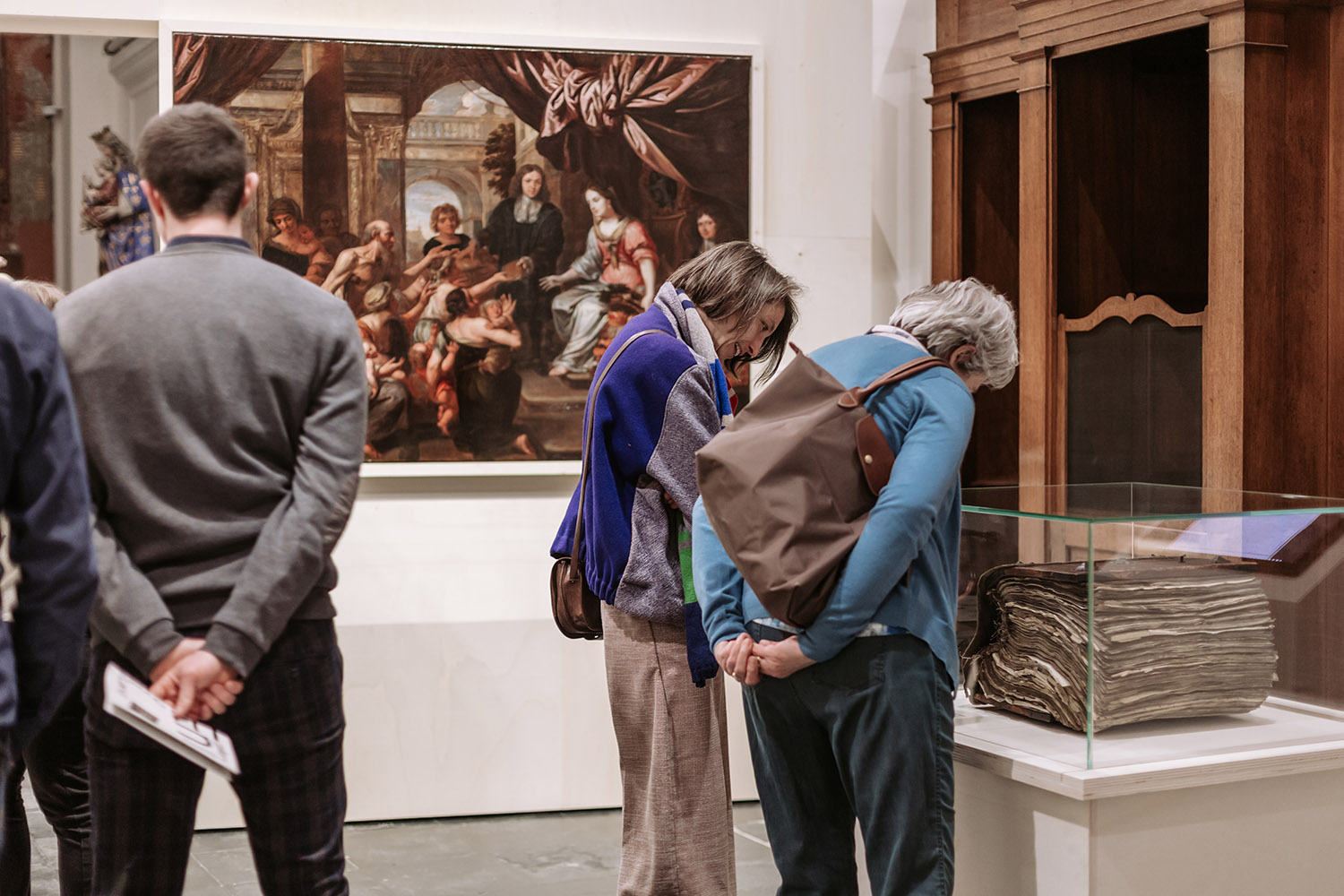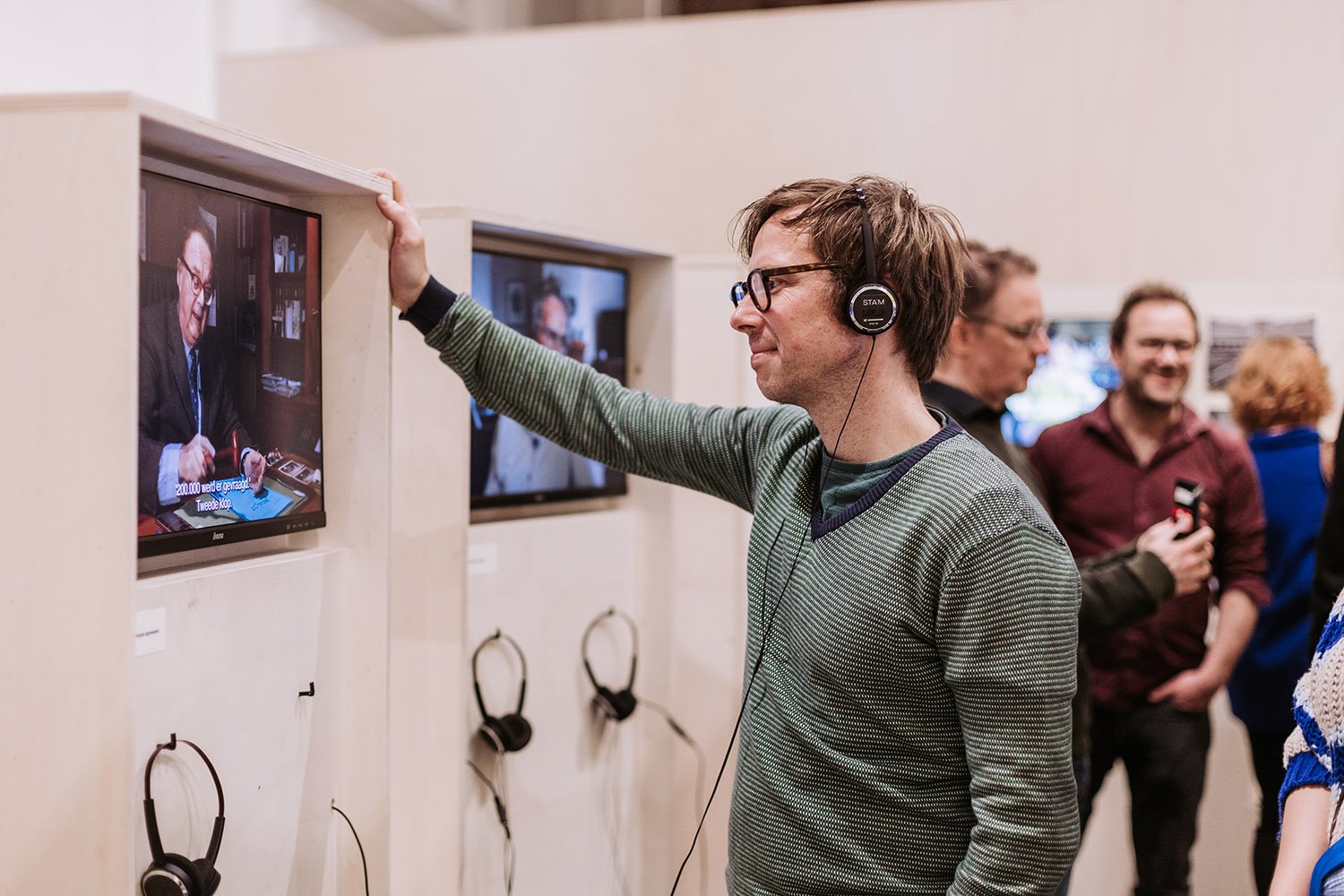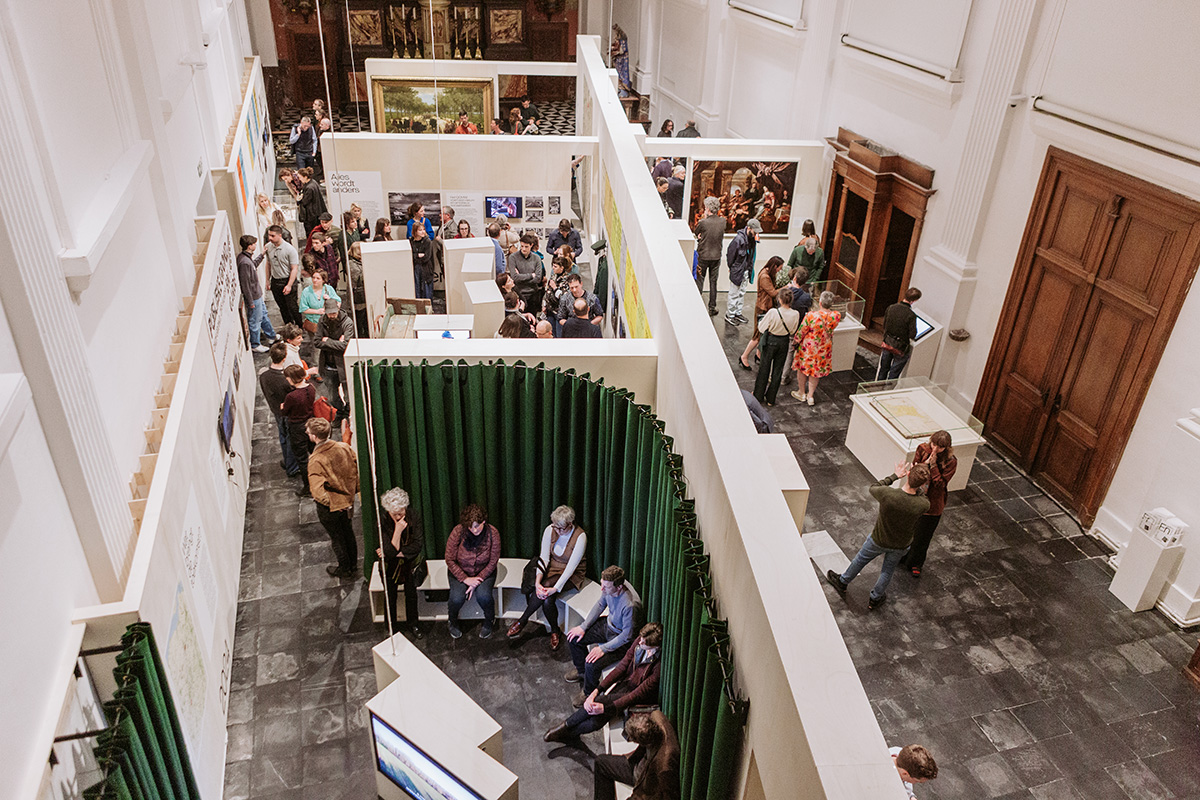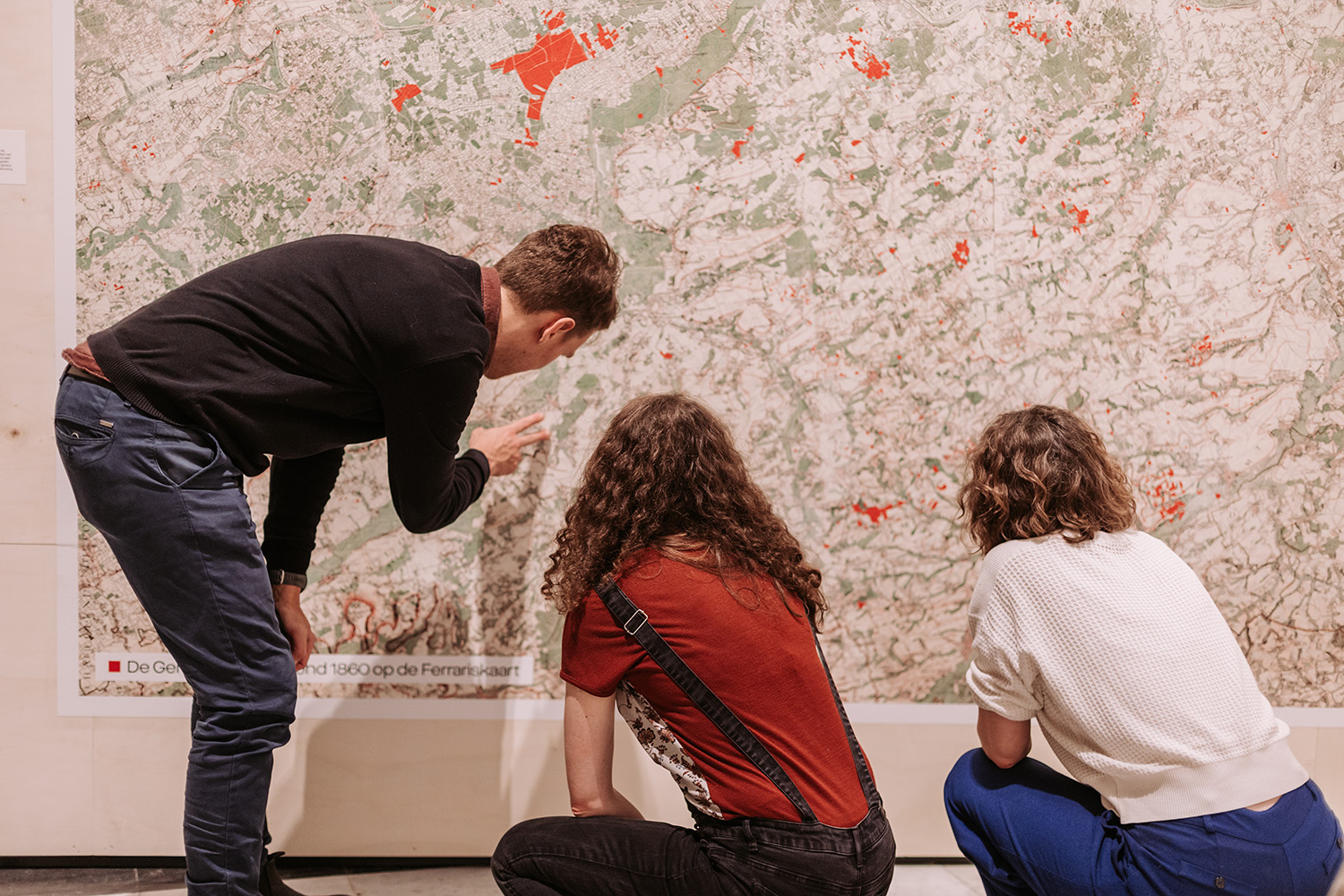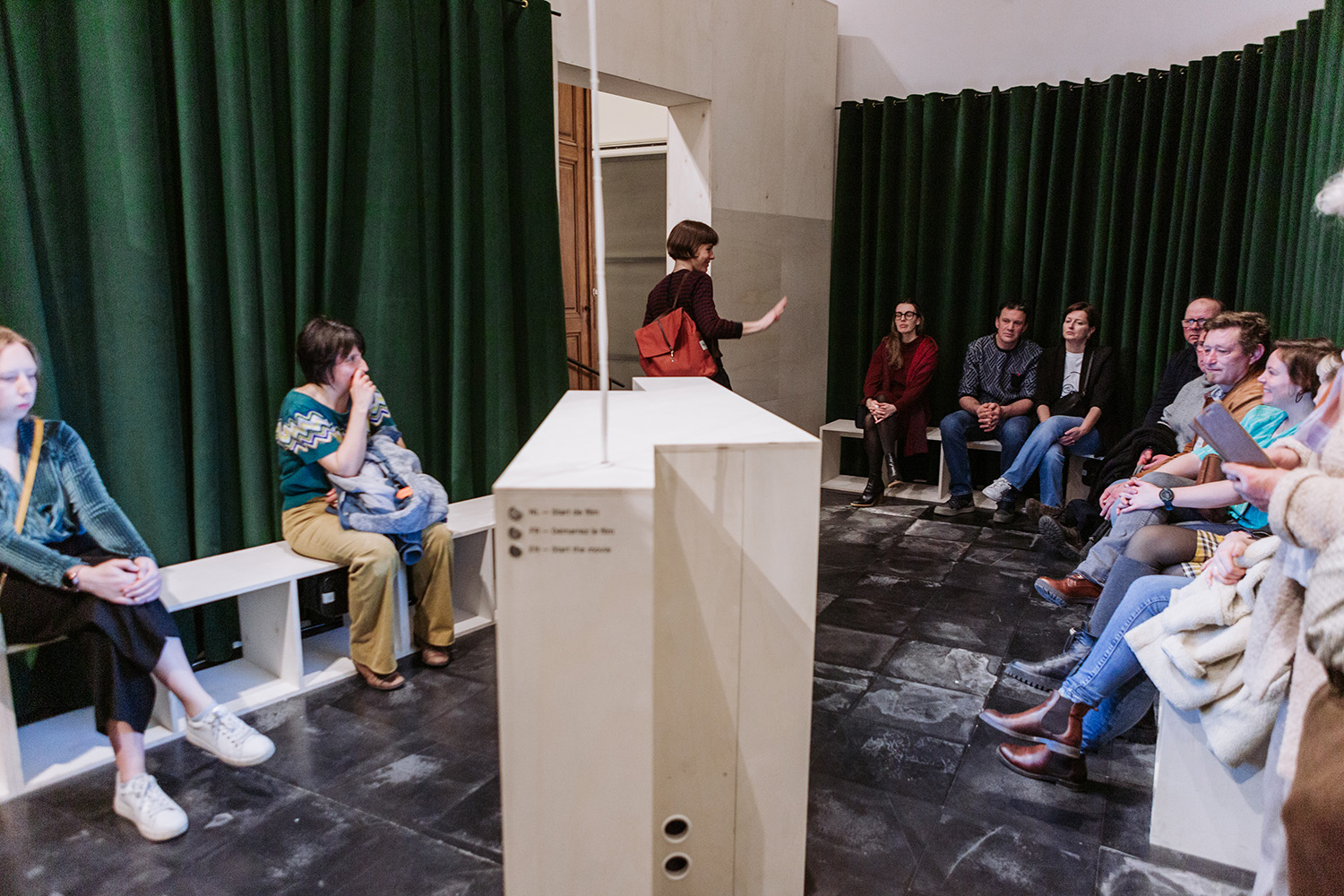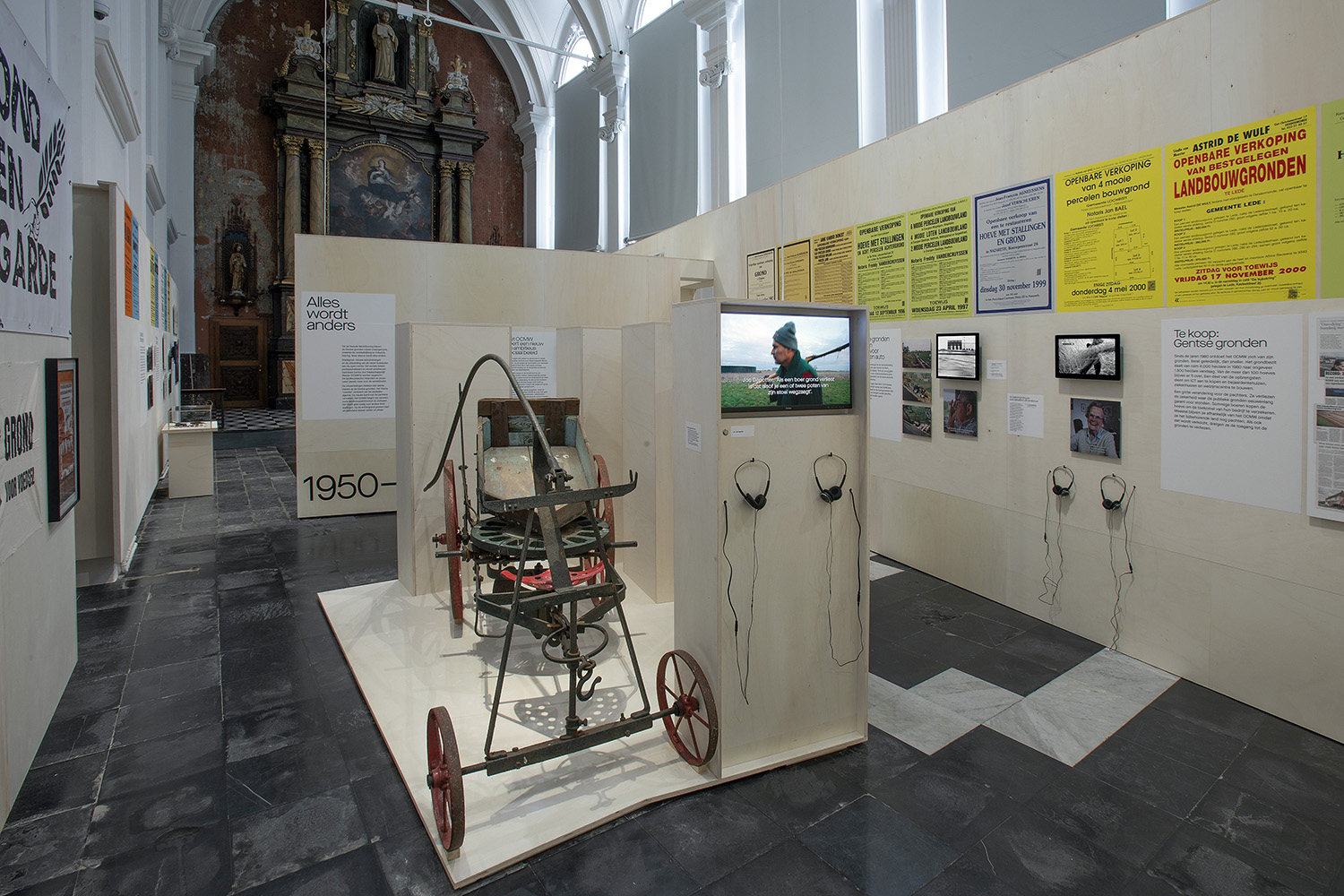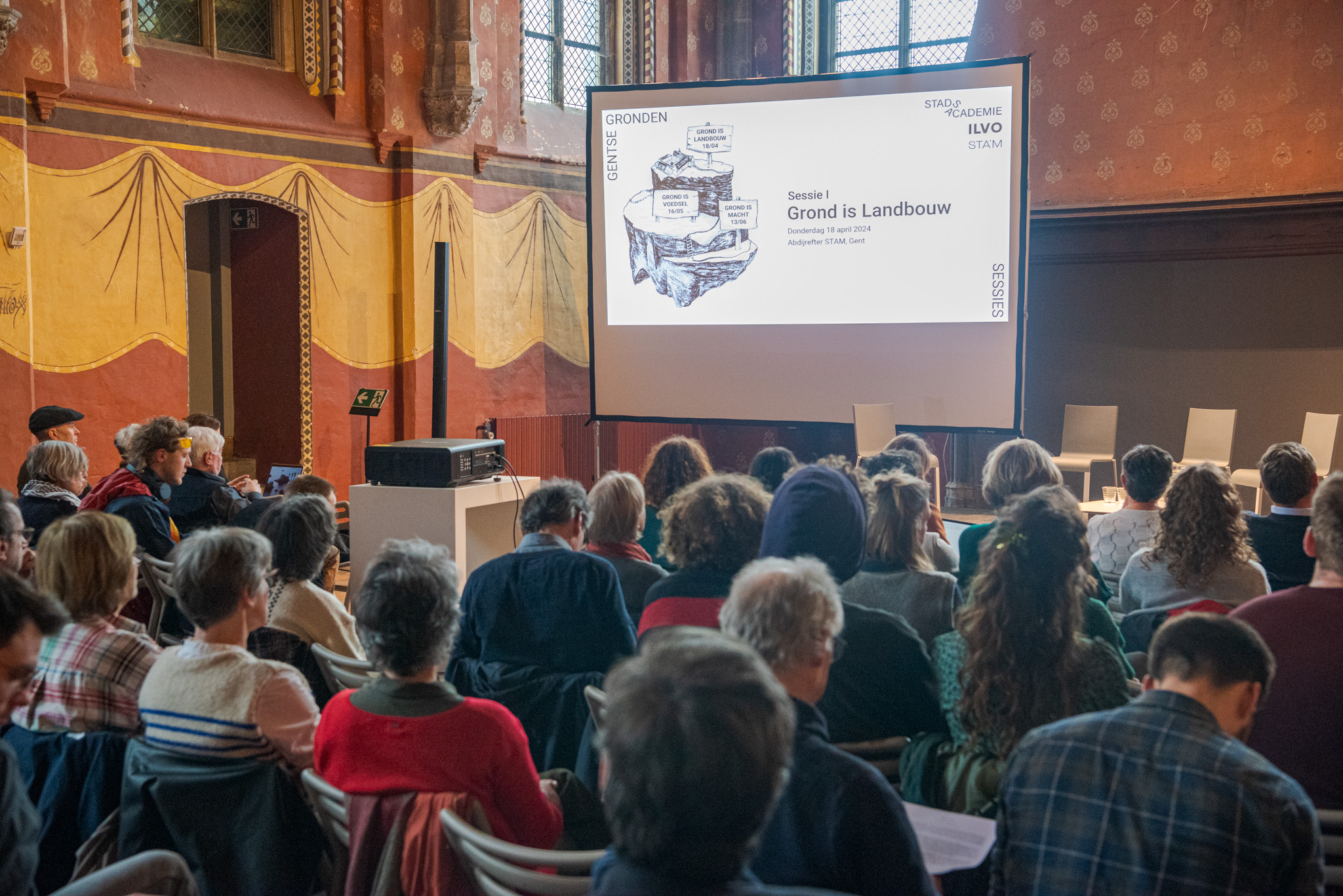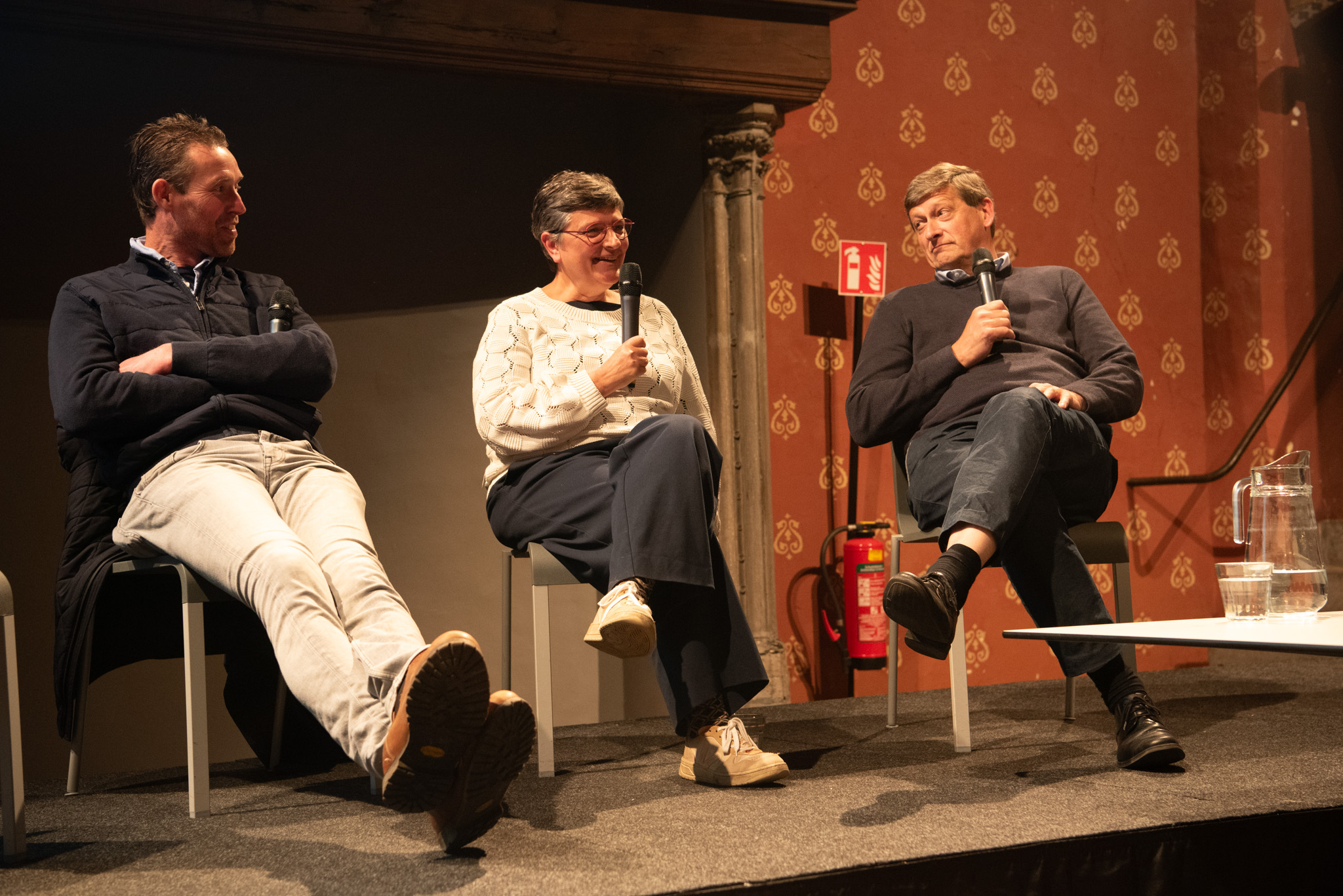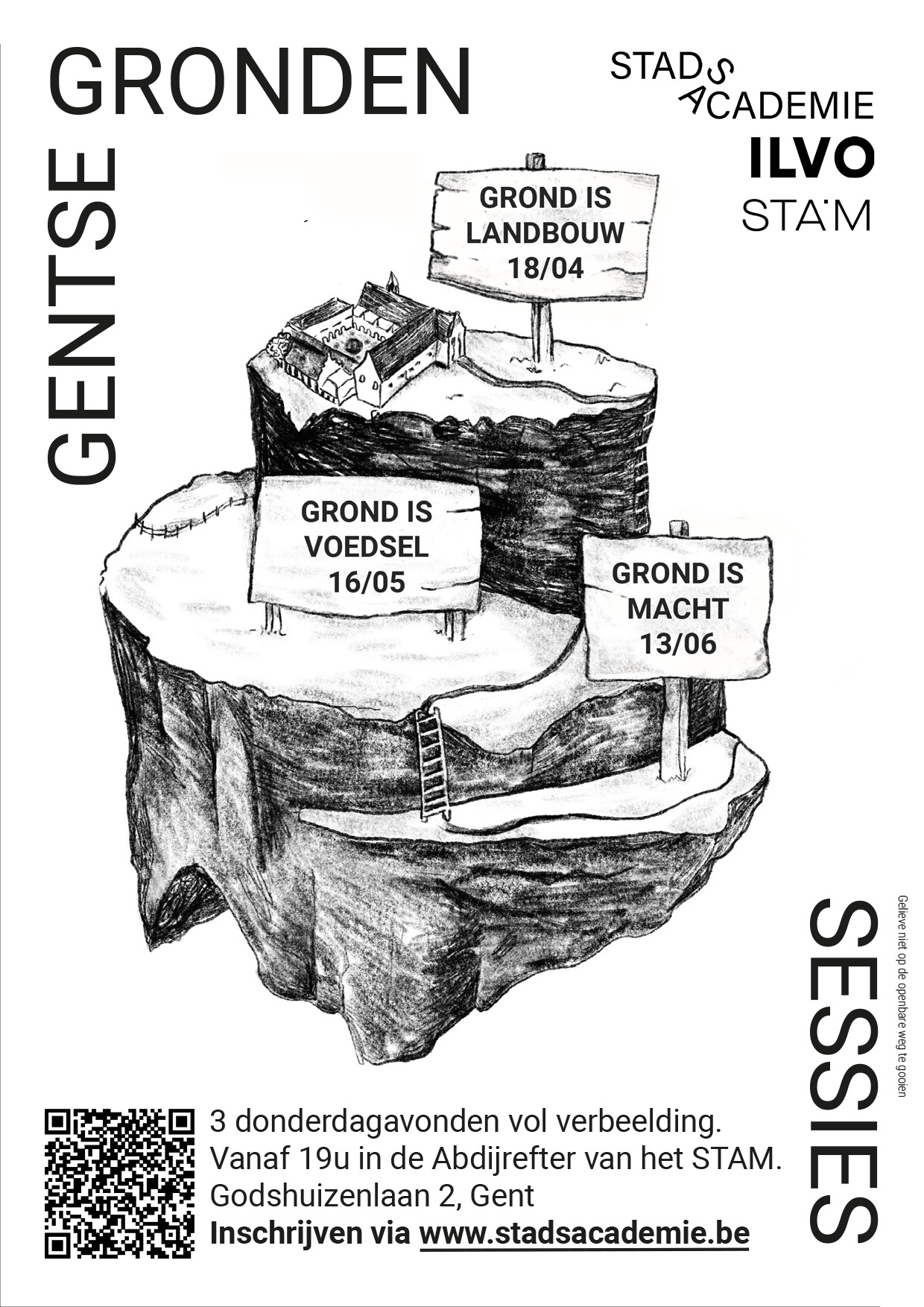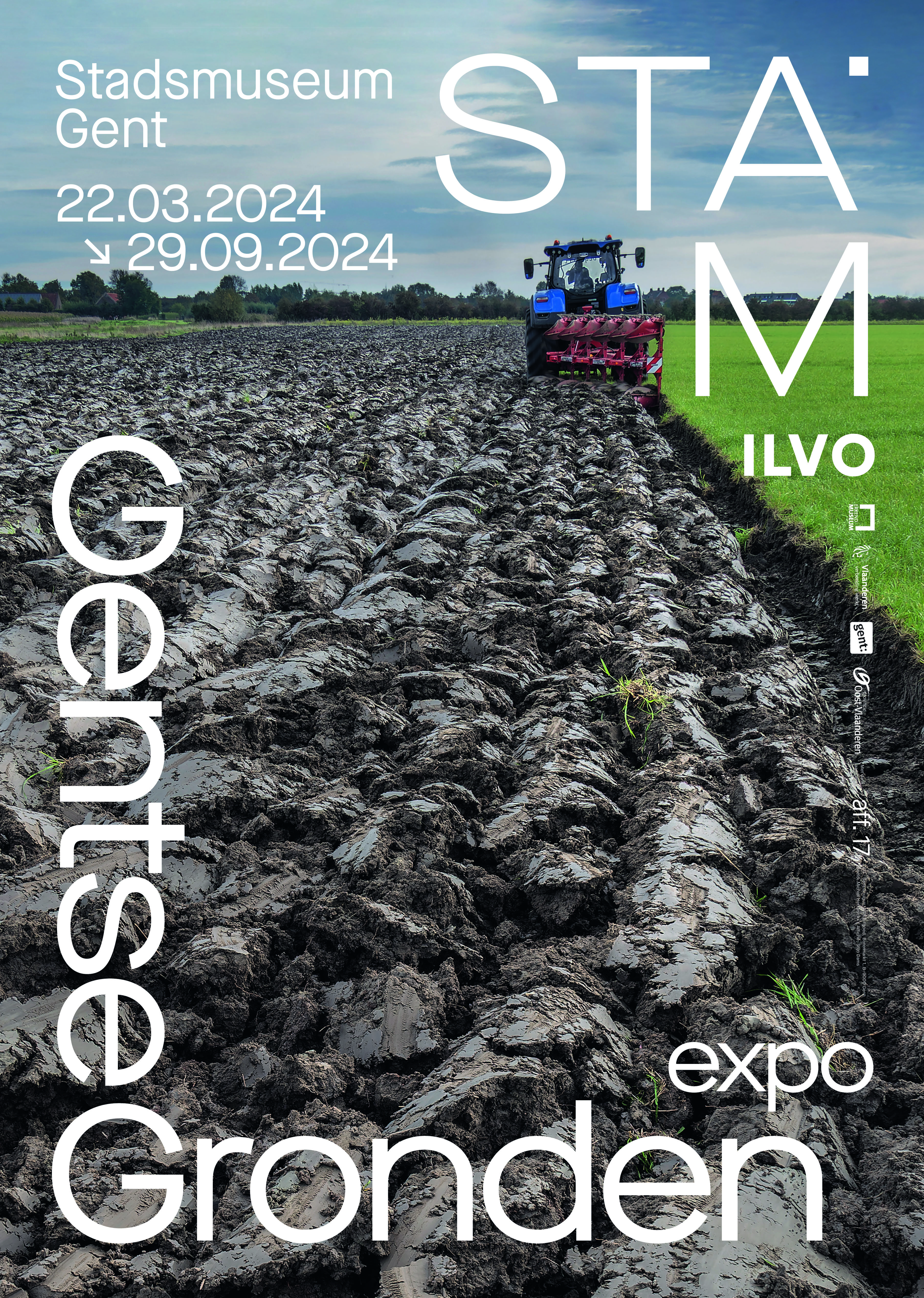Reconnecting with nature
Ghent's Land: History and Future
Ghent's Land: Exploring the History of Public Farmland for a Sustainable and Inclusive Future
The Ghent’s Land project explored the history and future of Ghent’s public farmland. Through an exhibition at STAM and debates with citizens, farmers, and civil servants, it raised awareness of sustainable agriculture and food systems. By connecting past and present, it fostered dialogue and inspired action for socially just and ecologically sustainable land use, highlighting the vital role of public farmland in strengthening urban-rural relations.
Belgium
Local
Ghent
It addresses urban-rural linkages
It refers to other types of transformations (soft investment)
Yes
2024-09-29
No
No
No
As a representative of an organisation
The Ghent’s Land project explored the past and future of public farmland. It reconnected urban populations with nature through a reflection on sustainable food systems. This initiative included an exhibition at STAM, Ghent’s city museum, and public activities, co-organized with ILVO, the Flanders Research Institute for Agriculture, Fisheries, and Food. It engaged farmers, civil servants, activists, and organizations involved in agriculture, urban planning, and social welfare.
The STAM exhibition showed the 800-year history of Ghent’s farmland, highlighting strong urban-rural ties. While the city once owned 5,000 hectares of farmland – mostly outside its boundaries – this has decreased to 1,800 hectares due to land sales. From this historic perspective, the project raised awareness about pressing challenges in land use, soil management, farmer well-being, and food supply. Paintings, sculptures, archival documents, maps, and videos made these issues accessible and engaging for a broad audience.
Using a transdisciplinary approach, the project provided a platform for stakeholders to address polarization in discussions on public farmland. To foster dialogue, STAM organized a steering committee, a debate series, and public lectures in collaboration with ILVO and Stadsacademie, a transdisciplinary platform for sustainability issues at Ghent University. These interactive activities focused on how public farmland can be utilized in the 21st century to meet both environmental and social needs, bridging the popular divide between nature and agriculture.
Ultimately, Ghent’s Land reconnected visitors with nature by deepening their understanding of agricultural land’s significance for urban areas and encouraging constructive dialogue on the future of public land. The projected increased citizen engagement, fostered collaboration among key stakeholders, and generated new insights into research and policies for sustainable food systems.
The STAM exhibition showed the 800-year history of Ghent’s farmland, highlighting strong urban-rural ties. While the city once owned 5,000 hectares of farmland – mostly outside its boundaries – this has decreased to 1,800 hectares due to land sales. From this historic perspective, the project raised awareness about pressing challenges in land use, soil management, farmer well-being, and food supply. Paintings, sculptures, archival documents, maps, and videos made these issues accessible and engaging for a broad audience.
Using a transdisciplinary approach, the project provided a platform for stakeholders to address polarization in discussions on public farmland. To foster dialogue, STAM organized a steering committee, a debate series, and public lectures in collaboration with ILVO and Stadsacademie, a transdisciplinary platform for sustainability issues at Ghent University. These interactive activities focused on how public farmland can be utilized in the 21st century to meet both environmental and social needs, bridging the popular divide between nature and agriculture.
Ultimately, Ghent’s Land reconnected visitors with nature by deepening their understanding of agricultural land’s significance for urban areas and encouraging constructive dialogue on the future of public land. The projected increased citizen engagement, fostered collaboration among key stakeholders, and generated new insights into research and policies for sustainable food systems.
Public farmland
Sustainable food systems
Urban-rural relations
Public debate
Historical awareness
Agriculture is one of the biggest global challenges to climate change and biodiversity loss, especially with the globalization of food systems and the conversion of natural ecosystems into farmland. The Ghent’s Land project promoted the sustainable use of agricultural land by raising awareness and stimulating debate on public farmland, using Ghent as a case study. In Flanders, 17% of all land is publicly owned, with one-fourth designated for agriculture. The province of East Flanders alone has 9,000 hectares of public farmland, including 1,800 hectares owned by Ghent. By bridging the common divide between ‘nature’ and ‘agriculture’, STAM addressed the prevailing ignorance and neglect regarding the potential of public farmland to enhance nature experience and promote restoration.
First, the Ghent’s Land exhibition explored the history of public land ownership through archival documents, paintings, sculptures, and videos. It showed how public farmland once guaranteed long-term stability for farmers and was linked to urban markets via short-chain food networks. Historic lease contracts revealed how sustainable practices, such as crop rotation and direct food deliveries, were historically encouraged.
Second, a documentary and public debate featured civil servants, farmers, activists, and researchers discussing the role of public farmland in the 21st century, including its potential for nature conservation and ecological restoration.
Additionally, sustainability was central to the exhibition’s design: walls were built from wood that is redeployable for future STAM exhibitions or storage crates, and display cases were reused. This reduced the ecological footprint of the museum and reinforced circular resource management in the cultural sector.
Through history, culture, and debate, the project raised public awareness of public land ownership and encouraged citizen engagement in rethinking the relationship between agriculture and urbanization.
First, the Ghent’s Land exhibition explored the history of public land ownership through archival documents, paintings, sculptures, and videos. It showed how public farmland once guaranteed long-term stability for farmers and was linked to urban markets via short-chain food networks. Historic lease contracts revealed how sustainable practices, such as crop rotation and direct food deliveries, were historically encouraged.
Second, a documentary and public debate featured civil servants, farmers, activists, and researchers discussing the role of public farmland in the 21st century, including its potential for nature conservation and ecological restoration.
Additionally, sustainability was central to the exhibition’s design: walls were built from wood that is redeployable for future STAM exhibitions or storage crates, and display cases were reused. This reduced the ecological footprint of the museum and reinforced circular resource management in the cultural sector.
Through history, culture, and debate, the project raised public awareness of public land ownership and encouraged citizen engagement in rethinking the relationship between agriculture and urbanization.
The Ghent’s Land exhibition was more than just a visual experience; it was a carefully shaped dialogue between aesthetics, narrative, and societal issues. Addressing complex topics like sustainability, agriculture, and food security, its design aimed to evoke emotion and foster meaningful engagement. By using visual storytelling, the exhibition encouraged a constructive debate on the future of Ghent’s public farmland, shifting the dialogue beyond politics and reaching a broad audience.
Unlike traditional art exhibitions, this project combined diverse objects to narrate the 800-year history of Ghent’s public land. A carefully curated selection of 116 items - including 27 original objects (paintings, maps, sculptures, and farm tools), 75 reproductions (illustrations and photographs), and 14 videos – connected historical context with the contemporary issues of community, urban-rural relations, and agriculture. Video portraits of tenants, social workers, a forester, and a notary brought the story of Ghent’s land to life, adding personal and emotional depth.
The exhibition took place in a stunning 280-square-meter church, part of STAM. This location was symbolic, as the church was once part of the Bijloke Abbey, a medieval charity institution tied to the origins of Ghent’s agricultural holdings. This location offered a unique setting that deepened the visitor’s connection to the story of the land. To enhance the visual experience, the scenographer designed imposing walls which mirrored the church's architecture, towering over visitors. Placed diagonally, they divided the space into four rooms, gradually building tension and reinforcing the exhibition’s narrative arc. The final room, enclosed by a curtain and equipped with a bench, invited visitors to watch a documentary and engage in debate.
Through a unique blend of debate, storytelling and design, Ghent’s Land transformed public farmland from an abstract policy issue into a tangible and engaging experience.
Unlike traditional art exhibitions, this project combined diverse objects to narrate the 800-year history of Ghent’s public land. A carefully curated selection of 116 items - including 27 original objects (paintings, maps, sculptures, and farm tools), 75 reproductions (illustrations and photographs), and 14 videos – connected historical context with the contemporary issues of community, urban-rural relations, and agriculture. Video portraits of tenants, social workers, a forester, and a notary brought the story of Ghent’s land to life, adding personal and emotional depth.
The exhibition took place in a stunning 280-square-meter church, part of STAM. This location was symbolic, as the church was once part of the Bijloke Abbey, a medieval charity institution tied to the origins of Ghent’s agricultural holdings. This location offered a unique setting that deepened the visitor’s connection to the story of the land. To enhance the visual experience, the scenographer designed imposing walls which mirrored the church's architecture, towering over visitors. Placed diagonally, they divided the space into four rooms, gradually building tension and reinforcing the exhibition’s narrative arc. The final room, enclosed by a curtain and equipped with a bench, invited visitors to watch a documentary and engage in debate.
Through a unique blend of debate, storytelling and design, Ghent’s Land transformed public farmland from an abstract policy issue into a tangible and engaging experience.
Inclusion was a core objective of the Ghent’s Land project, reflected in both its methodology and subject matter.
First, STAM expanded its partnerships beyond its traditional network. The exhibition was co-created with ILVO, a research institute for agriculture, fisheries, and food. STAM also collaborated with Stadsacademie, a transdisciplinary platform for sustainability issues in Ghent. Together, we engaged farmers, civil servants, experts, and activists – many with no prior museum experience – to co-create the exhibition. They contributed through video interviews, panel discussions, and the project’s steering committee.
Second, the history of Ghent’s land is closely tied to poverty alleviation. Since the Middle Ages, these farmlands belonged to charitable organizations and later fell under Ghent’s public welfare institution in 1976. The exhibition highlighted how these lands historically provided food and fuel for the city’s poorest inhabitants, but recent land sales have weakened this connection. The project examined how Ghent’s land could once again address inequality by supplying local, healthy food to those in need.
Third, the project focused on two vulnerable groups in today’s food system: urban consumers reliant on social welfare and farmers struggling with low incomes due to market pressures. By showing how public farmland historically linked these challenges, the exhibition inspired the debate on its future role.
Additionally, STAM applied its accessibility and affordability policies to ensure broad participation. The museum offers free or discount tickets for children (€0), low-income visitors (€2.2), young adults (€2.5), and Ghent residents (€7). For this exhibition, we actively reached out to diverse groups, offering guided tours at affordable rates. This initiative welcomed agricultural associations, businesses, civil servants, students, and cultural organizations working in agriculture, food, social welfare, climate, and urban planning.
First, STAM expanded its partnerships beyond its traditional network. The exhibition was co-created with ILVO, a research institute for agriculture, fisheries, and food. STAM also collaborated with Stadsacademie, a transdisciplinary platform for sustainability issues in Ghent. Together, we engaged farmers, civil servants, experts, and activists – many with no prior museum experience – to co-create the exhibition. They contributed through video interviews, panel discussions, and the project’s steering committee.
Second, the history of Ghent’s land is closely tied to poverty alleviation. Since the Middle Ages, these farmlands belonged to charitable organizations and later fell under Ghent’s public welfare institution in 1976. The exhibition highlighted how these lands historically provided food and fuel for the city’s poorest inhabitants, but recent land sales have weakened this connection. The project examined how Ghent’s land could once again address inequality by supplying local, healthy food to those in need.
Third, the project focused on two vulnerable groups in today’s food system: urban consumers reliant on social welfare and farmers struggling with low incomes due to market pressures. By showing how public farmland historically linked these challenges, the exhibition inspired the debate on its future role.
Additionally, STAM applied its accessibility and affordability policies to ensure broad participation. The museum offers free or discount tickets for children (€0), low-income visitors (€2.2), young adults (€2.5), and Ghent residents (€7). For this exhibition, we actively reached out to diverse groups, offering guided tours at affordable rates. This initiative welcomed agricultural associations, businesses, civil servants, students, and cultural organizations working in agriculture, food, social welfare, climate, and urban planning.
The Ghent’s Land project aimed to reconnect urban citizens with agriculture and the rural environment, addressing the growing disconnect of the past 50 years.
Since the Middle Ages, Ghent’s public farmland linked urbanization with agriculture, particularly supporting vulnerable social groups through short food supply chains. However, from the 1960s onward, the city sold much of this land, reducing public farmland from 5,000 to 1,800 hectares. This decline went largely unnoticed by the general public and even by most city officials, further deepening the urban-rural divide.
With growing urban interest in sustainable food, the project used public farmland to reengage citizens on issues of land use, soil management, and food justice. The Ghent’s Land exhibition at STAM combined historical paintings, agricultural objects, unexpected archival documents (such as a 14th-century hospital menu), and personal video testimonies to foster awareness, understanding, and emotional connection. Visitors – whether individually or on guided tours – gained insights that enabled them to form opinions, participate in public debates, and take action on the future of urban-rural relations.
Beyond the exhibition, interactive activities co-organized by STAM, ILVO, and Stadsacademie deepened engagement with Ghent’s farmland and sustainable food systems. Citizens and social organizations joined bicycle tours along Ghent’s land, farm volunteering days, a local food market at STAM, lectures, and three evening debates. Each debate gathered around 100 participants, empowering them to discuss sustainable agriculture with experts and stakeholders, fostering civic engagement in shaping the future of Ghent’s food system.
Since the Middle Ages, Ghent’s public farmland linked urbanization with agriculture, particularly supporting vulnerable social groups through short food supply chains. However, from the 1960s onward, the city sold much of this land, reducing public farmland from 5,000 to 1,800 hectares. This decline went largely unnoticed by the general public and even by most city officials, further deepening the urban-rural divide.
With growing urban interest in sustainable food, the project used public farmland to reengage citizens on issues of land use, soil management, and food justice. The Ghent’s Land exhibition at STAM combined historical paintings, agricultural objects, unexpected archival documents (such as a 14th-century hospital menu), and personal video testimonies to foster awareness, understanding, and emotional connection. Visitors – whether individually or on guided tours – gained insights that enabled them to form opinions, participate in public debates, and take action on the future of urban-rural relations.
Beyond the exhibition, interactive activities co-organized by STAM, ILVO, and Stadsacademie deepened engagement with Ghent’s farmland and sustainable food systems. Citizens and social organizations joined bicycle tours along Ghent’s land, farm volunteering days, a local food market at STAM, lectures, and three evening debates. Each debate gathered around 100 participants, empowering them to discuss sustainable agriculture with experts and stakeholders, fostering civic engagement in shaping the future of Ghent’s food system.
A key principle of the Ghent’s Land project was the active involvement of stakeholders engaged in managing and using Ghent’s public farmland. This diverse group included farmers (both tenants and young farmers seeking land) and representatives from Flemish and Belgian farmers’ organizations (Algemeen Boerensyndicaat, Boerenbond and Boerenforum), local civil servants from the city’s climate, agriculture, social welfare, patrimony, and urban planning departments, and researchers with expertise in farming, social welfare, and urban planning.
Stakeholders participated in three main ways. Eighteen individuals joined the exhibition’s steering committee, in their own name or as representatives of their organization. They shaped the exhibition’s content through three meetings from September 2021 (when the idea of the project was first pitched) to March 2024 (when the exhibition opened). Some stakeholders also contributed by appearing in video interviews that were shown in the exhibition, including an 18-minute documentary on the future of Ghent’s farmland. Finally, many stakeholders took part in public activities from March to September 2024, including guided tours, lectures, and debates. Some even became organizational partners. Stadsacademie, a transdisciplinary platform specializing in sustainability issues, led a public debate series, the main insights of which have been published on its website. ILVO organized two research days with farmers, farmers’ organizations, civil servants, and policymakers. Tim Soens (University of Antwerp) coordinated a conference at STAM on the history of urban farmland, bringing together scholars from across Europe.
This strong stakeholder involvement was a cornerstone of the project, fostering support, reducing polarization, and building trust among partners. Their networks helped to attract a diverse audience, and crucially, the stakeholders integrated the topic of public agricultural land into their own work and initiatives.
Stakeholders participated in three main ways. Eighteen individuals joined the exhibition’s steering committee, in their own name or as representatives of their organization. They shaped the exhibition’s content through three meetings from September 2021 (when the idea of the project was first pitched) to March 2024 (when the exhibition opened). Some stakeholders also contributed by appearing in video interviews that were shown in the exhibition, including an 18-minute documentary on the future of Ghent’s farmland. Finally, many stakeholders took part in public activities from March to September 2024, including guided tours, lectures, and debates. Some even became organizational partners. Stadsacademie, a transdisciplinary platform specializing in sustainability issues, led a public debate series, the main insights of which have been published on its website. ILVO organized two research days with farmers, farmers’ organizations, civil servants, and policymakers. Tim Soens (University of Antwerp) coordinated a conference at STAM on the history of urban farmland, bringing together scholars from across Europe.
This strong stakeholder involvement was a cornerstone of the project, fostering support, reducing polarization, and building trust among partners. Their networks helped to attract a diverse audience, and crucially, the stakeholders integrated the topic of public agricultural land into their own work and initiatives.
Ghent’s Land was a transdisciplinary project, emerged from collaboration between historians, urban planners, agricultural experts, and community activists, who shared a common concern over the rapid sale of Ghent’s public farmland. Starting in 2019, a cross-disciplinary dialogue was initiated, involving lectures, workshops, debates and protests, bringing together diverse perspectives. This transdisciplinary approach integrated both academic research and non-academic societal partners, such as the protest movement Hongerige Stad, the educational platform Stadsacademie, and the farmers’ organization Boerenforum. This collaboration fostered cross-pollination between research, education, and activism, leading to a deeper understanding of how public land management intersects with social welfare, urban development, and sustainable food production.
While the dialogue brought valuable insights, it could not fully mitigate societal polarization, as the issue of public farmland touches on sensitive social and political issues. One of the biggest shortcomings was the lack of solid data on the extent, nature, and use of Ghent’s farmland among policymakers, civil servants, activists, and experts. To address this, STAM joined the project in 2021 to facilitate the creation of an exhibition. This cultural exhibition provided a neutral space that transformed polarization into constructive dialogue among stakeholders, enhancing mutual understanding and making complex knowledge and viewpoints accessible to a broad audience, evoking their interest, emotion, and engagement.
For the project’s realization, STAM partnered with ILVO, which played a key role in curating the contemporary agricultural section of the exhibition. This original collaboration added significant value by ensuring that the exhibition was informed by the latest research in agriculture, bridging the historical context with modern practices and engaging stakeholders from both agriculture and administration.
While the dialogue brought valuable insights, it could not fully mitigate societal polarization, as the issue of public farmland touches on sensitive social and political issues. One of the biggest shortcomings was the lack of solid data on the extent, nature, and use of Ghent’s farmland among policymakers, civil servants, activists, and experts. To address this, STAM joined the project in 2021 to facilitate the creation of an exhibition. This cultural exhibition provided a neutral space that transformed polarization into constructive dialogue among stakeholders, enhancing mutual understanding and making complex knowledge and viewpoints accessible to a broad audience, evoking their interest, emotion, and engagement.
For the project’s realization, STAM partnered with ILVO, which played a key role in curating the contemporary agricultural section of the exhibition. This original collaboration added significant value by ensuring that the exhibition was informed by the latest research in agriculture, bridging the historical context with modern practices and engaging stakeholders from both agriculture and administration.
Food is an increasingly popular topic in urban contexts. Concerned about health and sustainability, citizens and governments worldwide engage in urban gardening, subscribe to local food packages, and support local food policies. The Ghent’s Land project introduced three key innovations compared to existing projects in sustainable food systems.
First, it strengthened short-chain food networks by stimulating dialogue, connectivity and collaboration between the city of Ghent and its rural hinterland. The city owns nearly 1,800 hectares of agricultural land, mostly in rural areas within 15-20 km of the city center, making it ideally located for sustainable food production for urban consumers. As this land is managed by the city’s social welfare organization (OCMW), it offers unique opportunities to fully integrate food equality into the urban food system. Recognizing this potential, STAM and ILVO used Ghent’s public farmland as a test case for sustainable short-chain food systems. This focus on city-countryside relations fundamentally expands the scale and accessibility of existing urban food projects, which often remain confined to city spaces.
Second, the exhibition stimulated transdisciplinary dialogue and societal debate, going beyond its function as information-sharing platform. As a visual cultural experience, it deepened intellectual and emotional engagement among citizens and stakeholders.
Third, Ghent’s Land integrated historical perspective into the debate on food, agriculture and sustainability. While many urban food projects focus on practical present-day solutions, this initiative contextualized today’s challenges by informing the public about the 800-year-old relations between city, agriculture and countryside. By adding depth and nuance, it enriched ongoing debates and initiatives.
First, it strengthened short-chain food networks by stimulating dialogue, connectivity and collaboration between the city of Ghent and its rural hinterland. The city owns nearly 1,800 hectares of agricultural land, mostly in rural areas within 15-20 km of the city center, making it ideally located for sustainable food production for urban consumers. As this land is managed by the city’s social welfare organization (OCMW), it offers unique opportunities to fully integrate food equality into the urban food system. Recognizing this potential, STAM and ILVO used Ghent’s public farmland as a test case for sustainable short-chain food systems. This focus on city-countryside relations fundamentally expands the scale and accessibility of existing urban food projects, which often remain confined to city spaces.
Second, the exhibition stimulated transdisciplinary dialogue and societal debate, going beyond its function as information-sharing platform. As a visual cultural experience, it deepened intellectual and emotional engagement among citizens and stakeholders.
Third, Ghent’s Land integrated historical perspective into the debate on food, agriculture and sustainability. While many urban food projects focus on practical present-day solutions, this initiative contextualized today’s challenges by informing the public about the 800-year-old relations between city, agriculture and countryside. By adding depth and nuance, it enriched ongoing debates and initiatives.
The exhibition emerged from a transdisciplinary approach, combining academic research and museum practices while engaging societal partners and stakeholders. The first phase, beginning with its informal launch in 2021, focused on building support and trust through a stakeholder steering group. Throughout the project, these stakeholders acted as a sounding board, providing ideas, feedback, and a network of partners.
In February 2023, the research phase began, combining methodologies from historical research and urban planning, including archival research, oral history, and stakeholder interviews. Historical documents, exhibition objects, and witness testimonies were collected, emphasizing the connection between the history of Ghent, agriculture, and nature.
From August 2023 onward, the project shifted to developing the exhibition’s storyline and design, with the aim of creating a meaningful public dialogue about the city’s agricultural heritage. Experts in storytelling, video production, communication, and public outreach were engaged to ensure the project resonated with a broad audience. Collaboration with a scenographer, graphic designer, and an exhibition construction company finalized the design and visual experience. The exhibition opened in March 2024, marking the start of a new phase of collaboration. Societal partners co-organized various activities from March to September 2024, including debates, lectures, bicycle tours, and farm visits, further enriching the public dialogue.
The project’s methodology involved societal partners at every phase. This increased awareness, stimulated dialogue, and ensured a long-lasting impact within the community.
In February 2023, the research phase began, combining methodologies from historical research and urban planning, including archival research, oral history, and stakeholder interviews. Historical documents, exhibition objects, and witness testimonies were collected, emphasizing the connection between the history of Ghent, agriculture, and nature.
From August 2023 onward, the project shifted to developing the exhibition’s storyline and design, with the aim of creating a meaningful public dialogue about the city’s agricultural heritage. Experts in storytelling, video production, communication, and public outreach were engaged to ensure the project resonated with a broad audience. Collaboration with a scenographer, graphic designer, and an exhibition construction company finalized the design and visual experience. The exhibition opened in March 2024, marking the start of a new phase of collaboration. Societal partners co-organized various activities from March to September 2024, including debates, lectures, bicycle tours, and farm visits, further enriching the public dialogue.
The project’s methodology involved societal partners at every phase. This increased awareness, stimulated dialogue, and ensured a long-lasting impact within the community.
The agricultural holdings of Ghent are not unique. Both historical and contemporary research show that urban farmland ownership exists across Europe and beyond. Many cities, with histories similar to Ghent’s, inherited farmland from medieval religious and charitable institutions. As a result, the Ghent project holds significant relevance for other cities, both nationally and internationally. It has been recognized as exemplary by civil servants, researchers, and societal organizations from other regions who visited the exhibition and participated in the activities.
This project’s methodology and research approach can be replicated in other cities, especially those with historical urban farmland ownership. The project’s focus on both the past and present of public land is transferable to various contexts. For example, other cities could map their own public farmland, gather archival documents, and document testimonies from local communities. A group of international historians who visited the STAM exhibition will publish an academic volume with 15 case studies of historical farmland in different European cities. AESOP, the European association of (urban) planners, was inspired by the Ghent case during its conference on sustainable food planning in June 2024, leading to cross-European comparisons.
Additionally, the cultural museum format used in Ghent provides a model for other institutions to communicate complex stories and data to a broad audience, facilitating understanding and dialogue.
The project’s co-creative methodology has been particularly inspiring. The way it stimulated open dialogue between stakeholders with divergent opinions and interests offers a replicable process for other cities aiming to engage diverse communities and foster collaboration. Public institutions with farmland in other regions have identified this approach as highly relevant, recognizing its potential for local engagement and inter-institutional cooperation.
This project’s methodology and research approach can be replicated in other cities, especially those with historical urban farmland ownership. The project’s focus on both the past and present of public land is transferable to various contexts. For example, other cities could map their own public farmland, gather archival documents, and document testimonies from local communities. A group of international historians who visited the STAM exhibition will publish an academic volume with 15 case studies of historical farmland in different European cities. AESOP, the European association of (urban) planners, was inspired by the Ghent case during its conference on sustainable food planning in June 2024, leading to cross-European comparisons.
Additionally, the cultural museum format used in Ghent provides a model for other institutions to communicate complex stories and data to a broad audience, facilitating understanding and dialogue.
The project’s co-creative methodology has been particularly inspiring. The way it stimulated open dialogue between stakeholders with divergent opinions and interests offers a replicable process for other cities aiming to engage diverse communities and foster collaboration. Public institutions with farmland in other regions have identified this approach as highly relevant, recognizing its potential for local engagement and inter-institutional cooperation.
Worldwide, agriculture constitutes a major challenge to sustainable resource management, especially with the globalization of food production and consumption. The UN Sustainable Development Goals (SDGs) identify sustainable food systems as key for mitigating climate change and restoring biodiversity.
While food and agriculture have global significance, they are inherently local, tied to land and soil. Achieving sustainable agriculture on a global scale requires more localized, agro-ecological food production and consumption, supported by short-chain food systems that reduce global traffic and pollution.
This community-based project, located in Ghent, is exemplary in this regard. Critics may highlight its small scale, limited to public farmland in the Ghent area that constitutes ‘only’ 1.800 hectares and affects ‘only’ 160 farmers who lease these farmlands. However, these holdings do not exist in isolation. They are embedded in larger agricultural landscapes, connected to other natural resources such as water, forests, and wetlands, and linked to farms that use non-public land. By raising awareness of Ghent’s public farmland and stimulating debate on its future, the Ghent’s Land project fosters a significant spill-over effect, benefitting ecological conservation and restoration efforts of agricultural and natural resources across the region.
To this end, the project’s transdisciplinary community approach was essential, forging long-term relations and partnerships between societal partners in agriculture, nature conservation, social welfare, and urban planning. This connectivity was supported by the exhibition’s historical perspective, which featured unique archival documents, compelling artworks, and emotional videos. These visual elements informed and engaged stakeholders and citizens on key issues such as soil management, short-chain food networks, food equality, and social welfare, highlighting their deep roots in the history of city-countryside relations.
While food and agriculture have global significance, they are inherently local, tied to land and soil. Achieving sustainable agriculture on a global scale requires more localized, agro-ecological food production and consumption, supported by short-chain food systems that reduce global traffic and pollution.
This community-based project, located in Ghent, is exemplary in this regard. Critics may highlight its small scale, limited to public farmland in the Ghent area that constitutes ‘only’ 1.800 hectares and affects ‘only’ 160 farmers who lease these farmlands. However, these holdings do not exist in isolation. They are embedded in larger agricultural landscapes, connected to other natural resources such as water, forests, and wetlands, and linked to farms that use non-public land. By raising awareness of Ghent’s public farmland and stimulating debate on its future, the Ghent’s Land project fosters a significant spill-over effect, benefitting ecological conservation and restoration efforts of agricultural and natural resources across the region.
To this end, the project’s transdisciplinary community approach was essential, forging long-term relations and partnerships between societal partners in agriculture, nature conservation, social welfare, and urban planning. This connectivity was supported by the exhibition’s historical perspective, which featured unique archival documents, compelling artworks, and emotional videos. These visual elements informed and engaged stakeholders and citizens on key issues such as soil management, short-chain food networks, food equality, and social welfare, highlighting their deep roots in the history of city-countryside relations.
This project strengthened the connection between urban society, sustainable agriculture, and the rural environment through a historical exhibition, public debates, and video portraits. Unlike most existing food projects that offer practical solutions, like urban gardens or food packages, this initiative engaged citizens and stakeholders intellectually and emotionally with city-countryside relations, past and present. This deeper connection proved essential in building support among social partners and community members for future urban food projects, reducing risks of exclusion, polarization, or early termination.
The exhibition attracted 15.299 visitors. Its two curators guided 71 tours, particularly reaching stakeholders – farmers reliant on public farmland, civil servants managing it, activists opposing its sale, and professionals in history, agriculture, urban planning, and social welfare. These tours stimulated mutual understanding and respect. Additionally, STAM organized 33 accessible guided tours for citizens eager to explore the topic, sparking new interest in and engagement with agriculture and nature. Today, the main storyline, images, and videos of the exhibition can be permanently consulted on the STAM website.
Beyond these direct beneficiaries, the exhibition became a catalyst for innovative international research on public farmland’s role in sustainable agriculture and nature conservation. This was evident during two academic conferences at STAM in May and June 2024, organized by an international group of historians and urban planners. ILVO also expanded the Ghent case into broader research on all public farmland in Flanders and Brussels.
Finally, the project’s transdisciplinary approach built trust among societal partners closely involved in the project’s realization. This co-creative process inspired new food, agricultural, and nature-conservation initiatives based on public farmland, extending the project’s impact well beyond its conclusion.
The exhibition attracted 15.299 visitors. Its two curators guided 71 tours, particularly reaching stakeholders – farmers reliant on public farmland, civil servants managing it, activists opposing its sale, and professionals in history, agriculture, urban planning, and social welfare. These tours stimulated mutual understanding and respect. Additionally, STAM organized 33 accessible guided tours for citizens eager to explore the topic, sparking new interest in and engagement with agriculture and nature. Today, the main storyline, images, and videos of the exhibition can be permanently consulted on the STAM website.
Beyond these direct beneficiaries, the exhibition became a catalyst for innovative international research on public farmland’s role in sustainable agriculture and nature conservation. This was evident during two academic conferences at STAM in May and June 2024, organized by an international group of historians and urban planners. ILVO also expanded the Ghent case into broader research on all public farmland in Flanders and Brussels.
Finally, the project’s transdisciplinary approach built trust among societal partners closely involved in the project’s realization. This co-creative process inspired new food, agricultural, and nature-conservation initiatives based on public farmland, extending the project’s impact well beyond its conclusion.

